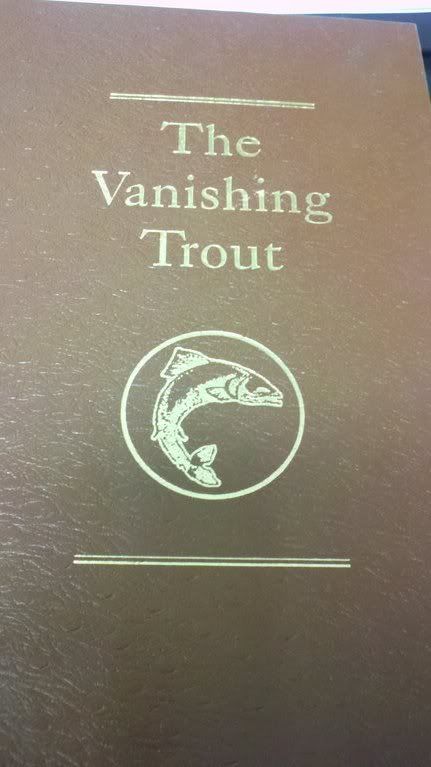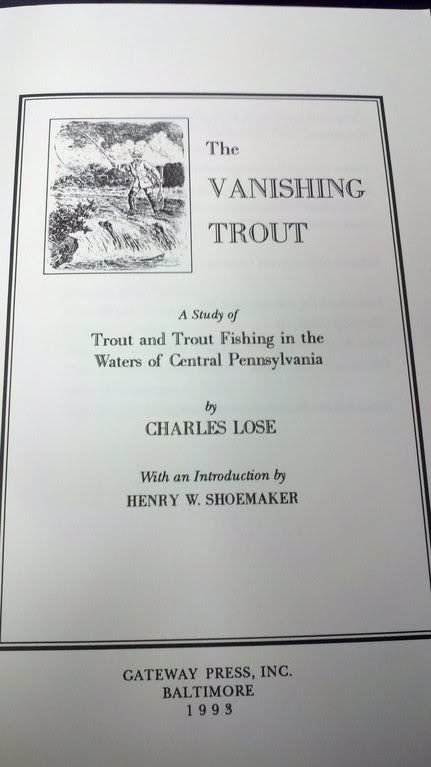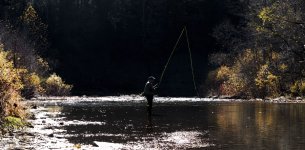J
jjsjigs
Member
- Joined
- Sep 9, 2009
- Messages
- 644

The Vanishing Trout by Dr. Charles Lose
Certainly there is no shortage of literature on fishing and flyfishing. Many gifted writers have turned their talents to both the beauties and practicalities of fishing; yet Dr. Charles Lose is one of the few whose work has been largely ignored. Originally penned in the 1920?s this work was merely a batch of short stories he wrote while living in Altoona, PA. However after his death in 1931, his manuscript was found and published by Henry W. Shoemaker of McElhattan, PA. (My edition is the sole 1993 Gateway Press reprint.)
Dr. Lose was one of the fore-front environmentalists on behalf of Pennsylvania’s trout. Shockingly enough, his outcry for the protection of our fisheries came at a time when environmental matters were a moot point in Penn’s Woods. In his lifetime he saw the demise of our old growth forests from the timber barons, the scarring land-rape from the coal mining companies, and even the “slob” practices of over-harvest from anglers. Sounds familiar even now in 2011, doesn’t it?
Take away timber barons and coal mining and replace with gas drilling and loss of fishery habitat. (The slob anglers horde remains the same). This was a book authored well before its time, but yet so everlasting a message for the protection of our fisheries. I would go so far as to include The Vanishing Trout in the same class as such cornerstones of the fishing literature as Ray Bergman’s, Trout, Izaak Walton’s The Compleat Angler, and Alfred Ronalds’ The Fly-Fisher’s Entomology.
As Dr. Lose himself observes, his life occurred during that in-between era of history, which saw the last of the so-called “old-fashioned ways” typified by stateliness, Victorian values, and a slower pace of life. That culture was supplanted by the beginnings of the modern era, characterized by scientific and technological advances and the environmental consequences (both good and bad) thereof. This bridging or blending of eras has a curious effect on his writing. The Victorian literary style is clear throughout, yet his approaches are clearly influencedAnother aspect of The Vanishing Trout that has helped its longevity is that it appeals to the thinking angler. He prose took me back to an earlier time when things were simple and beautiful. I have read several chapters over and have found something new each time I read and re-read this book. Much of his storylines take place on our famed Loyalsock Creek and deal with fishing for our Commonwealth’s native son, the Brook Trout. The premise of most of his stories can be attributed to his powers of observation and deduction, and he clearly communicates the value of these. By encouraging the reader to follow the dictates of his own reasoning than simply after the crowds or conventional wisdom, he strikes a chord in the intellectual snob lurking in all of us.
I loved this book and would suggest that any worthy FF'er pick up this book. I guarantee that it will remain one of your favorites.
.





